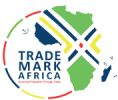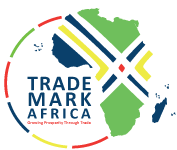A recent debate lamented the “dying creative spirit in young Africa” as a result of an “increasing focus on private sector approaches and values”. But is that the case? What about private sector creativity? At the East African Business Summit at the Mount Kenya Club, Dr. Kamau Gachigi of the University of Nairobi FABLAB highlighted an astonishing array of innovations by young Kenyans, including a wireless mesh network that can transmit a Wi-Fi signal across 10 km and help bring cheap Internet technology to low income neighbourhoods. Dying creative spirit? Really?
By the way, the debate was on Facebook, the product of a start-up innovator. The irony of this seemed to be lost. Nevertheless, there is no doubt that East Africa is an exciting place to be – for business AND for innovation – and the world is paying attention (Check out the Economist issue Africa Rising). According to the Economist, in eight of the past 10 years, Africa has grown faster than East Asia, including Japan, and the IMF expects Africa to grow by 6% this year and nearly 6% in 2012, about the same as Asia. Meanwhile, the Society for International Development asserts that foreign direct investment inflows have more than doubled in the past 10 years from $688 million in 2000 to $1.7 billion in 2010, with the highest recipients being Tanzania and Uganda. On a regional level, the EAC received an investment boost from China in the last quarter of 2011 worth $500 million, earmarked for infrastructure.
Manufacturing and commodities still play a crucial role in our economic mix. But that does not undermine the potential that technology and innovation could have for transforming our business and daily lives. Look at the phenomenon of M-Pesa, a truly internationally competitive product, expanding to South Africa and Tanzania, touted as an anti-corruption tool by Transparency International and credited with rooting out corruption in the Afghan police. Mobile money is viral; according to CIO/East Africa, there are 6.5 million subscribers who currently carry out 10 million banking transactions per day, with an average value of $20. M-Pesa pays our salaries, medical bills, school fees, online shopping, and can even be used to trade stocks and shares. Su Kahumbu’s iCow enables herders to register their cows, and to receive texts on animal husbandry, expert information and market pricing. The winner of the Nokia $1 million Innovation Challenge Award, John Waibochi’s “Virtual City”, is revolutionizing logistics management and innovating mobile business management to improve distributions efficiency for small and emerging businesses.
The five countries of the East African Community (EAC) are moving towards an integrated economic and political entity to deliver sustainable and equitable economic growth. As we know though, numerous barriers to the free movement of goods and people remain, and there are doubts whether an agenda driven solely by political elites can have an altogether positive effect on people. The private sector and civil society must have a key role too. One of the EAC’s instruments for integration is a private sector development strategy (PSDS) and there have been several initiatives drawing regional businesses and civil society into the development process.
Of course, the private sector and innovation cannot cure everything that ails East Africa. . Corruption and bad governance are two of the greatest hazards to the possibilities of our future. We don’t have to be told that corruption eats away at every government and every country, not just ours. The results of the January 2013 Synovate survey which sampled 5,895 Kenyan registered voters, profiled corruption, government failure, crime, insecurity, tribalism, ethnic tension and conflict as the top reasons that hinder development in the country.
So what are our MPs, some of the highest-paid in the world, doing?
It is hard to disagree with assertions that our electoral system rewards tribalism and aversion politics rather than meritocracy and suitability for the task confronting the legislature.
Poverty and insecurity remain major challenges, particularly as high rates of population growth in the region continue to counteract poverty-reduction efforts. East Africa continues to suffer from an infrastructure deficit and transport costs in East Africa are amongst the highest in the world, damaging the region’s ability to trade competitively in the international market. In particular, the time taken to get to and from the ports to landlocked countries is singled out as a major negative factor for our regional economic growth.
Dar es Salaam and Mombasa ports are key links in the transport supply chain in East Africa, with Dar currently handling over nine million tons of cargo per year and Mombasa about 20 million tons of cargo in 2011 alone, serving 250 million people across Kenya, Uganda, Rwanda, Burundi, Eastern Democratic Republic of Congo, South Sudan, and parts of Southern Ethiopia and northern Tanzania.
Despite this, the cost of shipping to Tanzania is about 25% higher than rates to competing ports in Southern Africa whilst technical and capacity challenges at the port of Mombasa contribute to the high cost of doing business in Kenya and the wider landlocked region. Higher transport costs mean higher costs for the consumer. Higher costs means lower competitiveness. And we know that import and exports are expected to grow enormously as the EAC moves into a higher gear. How can we maintain our competitiveness unless we cut our costs?
Private sector innovation or development is not a ‘’magic bullet’’ solution. We need better regulatory frameworks, stronger institutions, better respect for laws and policies and the right investments in infrastructure. Nevertheless, by better involving the private sector in the integration process, the development of the EAC should deepen and become more targeted towards economic growth. One tried and tested method of encouraging ideas and innovation is to invite private companies to ‘compete’ for support through a Challenge Fund, an instrument to catalyze, through risk-sharing, innovative business models and technologies that have proven ability to deliver large social impacts, but whose financial returns are untested. This enables new approaches to be tested by tipping investment decisions from ‘no-go’ to ‘go’, with the minimum of public investment.
The TradeMark Africa Challenge Fund (TRAC) invests in innovative projects that can boost regional trade in the East Africa Community (EAC) and the region’s trade with the rest of the world, catalyze innovation in services that enable cross-border trade and provide innovative ways of gathering evidence and mobilizing public opinion with regard to regional integration and trade in the EAC. Innovative projects, proposed by private firms that have the potential to boost cross-border and international trade, are eligible for funding.
What kind of ideas? Well that’s the point. We don’t know yet. M-Pesa mark II?
Lisa Karanja is Regional Director for the Private Sector and Civil Society at Trademark East Africa, which supports the process of regional integration with offices in Burundi, Kenya, Rwanda, Tanzania, Uganda and South Sudan.















